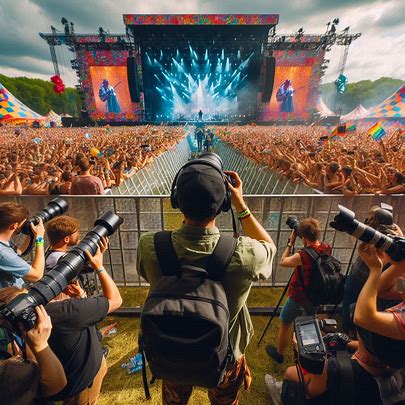 Large events like music festivals, sports championships, or political rallies draw thousands of people. They also attract journalists eager to capture every moment. Yet, without proper organization, chaos can disrupt their work. Fencing provides a simple yet effective solution. It creates designated media zones, ensuring journalists can report safely and efficiently while keeping the public secure.
Large events like music festivals, sports championships, or political rallies draw thousands of people. They also attract journalists eager to capture every moment. Yet, without proper organization, chaos can disrupt their work. Fencing provides a simple yet effective solution. It creates designated media zones, ensuring journalists can report safely and efficiently while keeping the public secure.
Why Fencing Matters for Safety
Safety remains a top priority at any large gathering. Fencing plays a critical role in protecting both journalists and attendees. Media personnel risk getting caught in surging crowds or unexpected stampedes without barriers. Fenced zones act as a buffer, giving journalists a secure space to work. Similarly, the public benefits from clear boundaries that prevent them from wandering into restricted areas, like backstage zones or equipment-heavy media setups.
Consider a marathon. Runners need unobstructed paths, and spectators must stay clear of the course. Fencing along the route creates a safe corridor for athletes while guiding journalists to designated vantage points. This setup minimizes accidents and ensures smooth event operations. Plus, it reassures event organizers that safety protocols are in place, reducing liability risks.
Enhancing Media Efficiency
Journalists work under tight deadlines. They need quick access to key areas to capture breaking news or exclusive interviews. Fenced media zones streamline this process. By providing dedicated entry and exit points, fencing helps reporters move efficiently without navigating through dense crowds. It also organizes equipment-heavy setups, like broadcast vans or camera tripods, keeping them secure and accessible.
During political events, for instance, media zones often include press pens surrounded by fencing. These areas allow journalists to set up equipment in advance and focus on the event. Without such organization, reporters might struggle to find space or deal with interruptions from curious onlookers. Fencing boosts productivity, letting the media deliver timely, high-quality coverage.
Balancing Access and Control
Fencing strikes a delicate balance between access and control. Journalists need proximity to the action, but events must maintain order. Well-placed fences achieve this. They guide media personnel to optimal locations while preventing overcrowding in sensitive areas. For example, at a film premiere, fencing directs red-carpet photographers to specific spots, ensuring everyone gets a fair shot without chaos.
However, fencing must be thoughtfully designed. Poorly placed barriers can obstruct views or create bottlenecks, frustrating journalists. Event organizers often collaborate with fencing providers to customize layouts that suit the venue and media needs. This attention to detail enhances the overall experience, making coverage smoother and more professional.
READ ALSO: The Parameters of Collecting the News
The Bigger Picture
Fencing does more than organize space—it shapes the narrative of an event. Clear, safe media zones enable journalists to focus on storytelling rather than logistics. They capture the energy of a festival, the drama of a sports match, or the gravity of a public speech. Their work informs and engages global audiences, amplifying the event’s impact.
Next time you watch coverage of a major event, think about the unseen barriers that make it possible. Fencing may not steal the spotlight, but its role is undeniable. It keeps journalists safe, boosts their efficiency, and ensures the public enjoys a secure experience. Without it, the seamless media coverage we take for granted would be far harder to achieve. So, here’s to the humble fence—quietly supporting the stories that connect us all.

